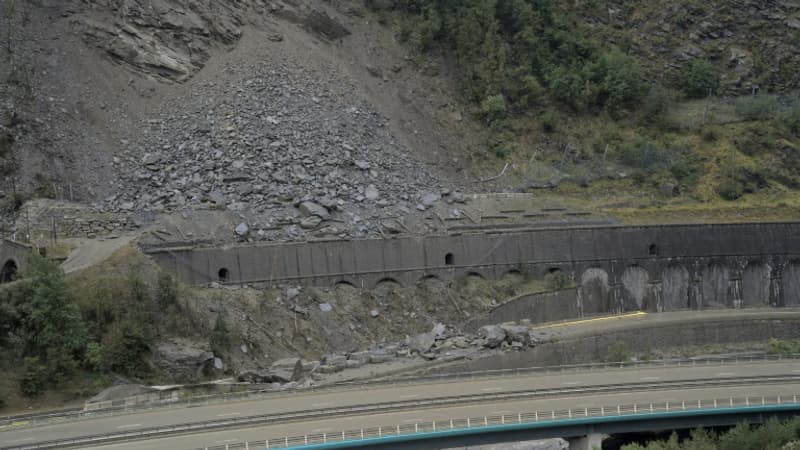Three months after the landslide in Maurienne that interrupted the rail link between France and Italy through the Alps, the economic and ecological consequences of this interruption that should last until the end of 2024 are beginning to be felt.
On August 27, 15,000 m3 of rocks fell from the Maurienne Valley mountain, cutting the most used railway line between the two countries, but also a departmental road and the A43 motorway. This landslide, which occurred in a notoriously fragile geological area, was triggered by heavy rain just after a heat wave. Although the highway was able to reopen about ten days later, the departmental highway and especially the railway line remain closed.
The rocks fell on a gallery whose structure was not damaged, according to SNCF Réseau. But authorities have yet to clear the 5,000 m3 mountain of unstable rock using water launches from helicopters or even dynamiting. Long and dangerous work, after which the cliff will be secured before reestablishing the network.
A dark scenario for French and Italian transporters who have circulated more than 10,000 trains on this axis in 2022.
Transfer to the road
“The dangerous goods that we have managed, with great difficulty, to transfer to the railway in recent years, will once again travel by road,” the Italian Ministry of Transport told AFP.
Rail transport companies are suffering the consequences, while “traffic in normal times reaches 150 trains per week, that is, about 75,000 tons transported every week,” says SNCF Réseau.
According to Transalpine, a committee that supports the rail tunnel project between Lyon and Turin and brings together communities and companies, this is equivalent to 170,000 trucks put into circulation per year. Mercitalia, the freight transport subsidiary of the Italian public railways, “quantified a loss of circulation of 376 trains per month, with a forecast of more than 1,300 trains in 2023”, that is, a deficit of 4 million euros each month.
According to Antoine Fatiga, director of the CGT-Cheminots in Auvergne-Rhône-Alpes, “80% of the goods that previously circulated by rail now circulate by road”, a postponement that road transporters reject.
His company transported many cars made at the Stellantis factory in Turin, including electric Fiat 500s, to Lyon or Paris. From now on “cars will be loaded onto car transporters,” laments the boss of DB Cargo.
closed tunnel
There is an alternative route, via Switzerland, but it is longer and above all “more expensive, about 2,000 euros more per train each way,” says Gallo. Instead of 36 weekly trains between France and Italy, his company only runs five. As for the passage through Ventimiglia, near Nice, “there are very few places available” due to the single road to Marseille and “three of the four places are already occupied”, laments Alexandre Gallo.
The transfer of goods from rail to road adds another difficulty: the closure for two months, until December 18, of the Mont-Blanc tunnel for maintenance reasons. Between 1,700 and 2,000 additional trucks arrive each day to congest the already busy Maurienne Valley.
Regarding passenger transport, in the absence of a direct Paris-Milan train, the SNCF offers alternative trips – but longer and with connections – through Switzerland. For the Christmas and winter holidays, the SNCF TGVs will mark the terminal at the very small Saint-Michel-Valloire station, unaccustomed to receiving such flows of travelers.
Source: BFM TV


